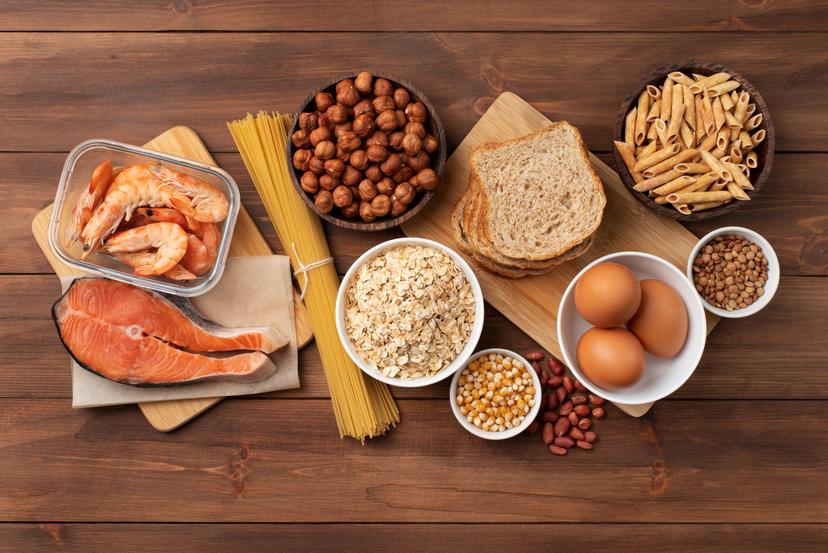June 2025
Deep Dive into the Energy Drink Market in India: Trends and Insights

There’s something oddly satisfying about the sharp crack of an energy drink can. It’s the sound of motivation in a can — a signal that it’s go-time. Juggling college deadlines, endless meetings, or non-stop schedules, people are increasingly turning to energy drinks to stay in the game.
Sure, the energy kick matters — but what’s really fueling this boom is a shift in how people live, work, and push through their days. This blog explores the forces driving India’s energy drink market, the people behind the demand, and what the future holds.
The Market Is Heating Up — And It’s Not Slowing Down
In FY2024, India’s energy drink market was valued at USD 36.1 million. By FY2032, it’s expected to touch USD 156.2 million, registering a CAGR of 20.11%. That’s nearly a fivefold jump in less than a decade — and that kind of scale tells us this isn’t a passing trend.
Compared to the slow, steady pace of the broader beverage market, the energy drink segment has surged ahead — driven by the youth who prize instant results, on-the-go formats, and brands that align with their identity using marketing tactics targeting millennials.
The figures are just one part of the picture. What’s more telling is where and how energy drinks are being consumed — in gyms, at college canteens, before exams, during gaming marathons, and even in co-working spaces. As routines get busier and demands climb, it's no surprise the energy drink market is picking up serious speed.
Urbanization, Hustle Culture, and the Need for Instant Energy
Urban India is on the move — and for many, the pace is relentless. Long hours, traffic, workouts, and social commitments leave little room to recharge. That’s where energy drinks come in — they offer a quick and accessible solution to physical fatigue and mental burnout.
As incomes rise and Consumer trends reshape urban lifestyles, convenience is no longer just a preference — it’s an expectation. Energy drinks fit right in, offering not just a quick boost, but a brand identity that signals speed, ambition, and modern living.
Take Hustle Energy, launched by Radiohead Brands in 2023. Its branding reflects this exact ethos — built for the city dweller constantly on the move, it’s positioned as more than a beverage. It’s a productivity hack, a mood booster, and a confidence kick, all rolled into one.
This kind of targeted positioning has helped energy drink brands tap into the growing segment of young professionals, students, and fitness enthusiasts who are constantly pushing themselves and looking for quick, reliable sources of energy.
Social Media and Influencer Culture: The New Marketing Engine
In today’s hyper-connected world, visibility is everything — and the role of social media in brand visibility is vital. Gone are the days when marketing relied solely on billboards or TV commercials. Today, it’s all about Instagram reels, fitness vlogs, Twitch gaming sessions, and YouTube reviews.
Energy drinks have become part of the youth aesthetic. They’re often seen in gym selfies, ‘study with me’ videos, and influencer morning routines. And with a growing number of Influencer marketing, catering to regional and niche audiences, these campaigns are becoming more relatable and far-reaching.
This isn’t accidental — it’s a deliberate strategy. By aligning their products with content creators who resonate with target audiences, brands are turning energy drinks into lifestyle products rather than occasional indulgences.
And thanks to affordable price points — with options starting as low as ₹25 — energy drinks are now within reach of students, gamers, and early-career professionals across Tier I, II, and even Tier III cities.
Gen Z and Millennials: The Core of the Consumption Curve
Look closely at who’s consuming energy drinks in India, and one pattern is clear — it’s a young market. Millennials and Gen Z make up the lion’s share of demand. Studying, working, or just staying sharp — energy drinks are part of how young India keeps going.
There are three key drivers here:
- Fitness and gym culture – Personal trainers often recommend energy boosters, and pre-workout routines are now commonplace among fitness-conscious youth.
- Social lifestyle – Late-night gatherings, music festivals, and events have created a space where energy drinks are a functional, socially acceptable alternative to alcohol or sugary sodas.
- Esports and gaming – With gaming now a full-time pursuit for many, energy drinks are marketed as performance enhancers for mental focus and endurance.
Global brands have caught on. Monster Energy, which entered India in 2014, launched Predator — a variant priced at ₹50 to specifically target price-sensitive Indian youth market. Domestic players like Janjira followed suit with offerings between ₹25 and ₹35, creating intense competition and rapid category expansion.
Sports Sponsorships: Visibility with Velocity
One of the most powerful tools in the marketing arsenal has been strategic sports sponsorships. These alliances not only boost brand recall but also help energy drinks establish emotional connections with audiences due to the popularity of sports nutrition products in urban areas
In January 2025, Predator Energy inked a three-year, $1.2 million sponsorship deal with the Indian Street Premier League (ISPL), becoming its official energy drink partner. The goal wasn’t just visibility — it was cultural relevance. And in India, that starts with cricket.
Such collaborations offer more than just visibility — they build a genuine connection with audiences at scale. They allow brands to be seen as energetic, youthful, and high-performance — exactly the attributes energy drink consumers identify with. And when fans see their favorite athletes or teams associated with a product, it drives aspiration and trust.
While sugar and caffeine products still headline most formulas, today’s consumers — especially India’s youth — are getting more selective. They’re looking for cleaner labels, sugar- free options and ingredients that do more than just give a buzz.
Today’s energy drinks are more than just sugar and caffeine — they’re mini-formulas engineered for performance. Guarana adds an extra caffeine kick, ginseng and taurine are said to support endurance and mental clarity, and B vitamins help convert food into usable energy. Some blends also throw in L-carnitine for fat metabolism or yohimbe for a sharper mental edge.
Consumers do not just want a jolt — they want drinks that actually taste good. That’s why we’re seeing everything from tropical mixes to cool mint fusions hitting the shelves.
The category is quietly redefining itself. With smarter ingredients and targeted benefits, energy drinks are nudging their way into routines once reserved for supplements and smart beverages.
The Pandemic and Post-COVID Surge in Demand
Interestingly, while the broader beverage industry took a hit during COVID-19, energy drinks showed unexpected resilience. In fact, consumption saw a modest increase, especially among those facing isolation-induced fatigue, anxiety, or disrupted sleep patterns.
The rise of at-home workouts, remote jobs, and endless screen time made energy drinks feel more useful than ever.
And as the world reopened, energy drink consumption bounced back stronger. Gyms, pubs, coworking spaces, and college campuses are now buzzing again — and energy drinks are back in the spotlight, this time as part of the new “normal.”
Where Do We Go from Here?
Growth forecast for health beverages in India’s energy drink market is clear — and it’s steep. For brands and investors, the opportunities are vast but also nuanced. Here’s what matters most:
- Demographic targeting: Know your core user — urban youth, students, young professionals — and craft messages that reflect their pace, aspirations, and values.
- Accessibility and affordability: Mid-tier pricing, regional distribution, and availability in kirana stores and vending machines can can quickly scale visibility and availability where it matters most.
- Cultural alignment: Think beyond product — invest in lifestyle storytelling, sports sponsorships, and campus activation programs.
- Innovation with intention: Natural ingredients and standout flavors give people a reason to come back and will help maintain brand loyalty and repeat purchases.
Final Thoughts: More Than a Fad, It's a Fuel for the Future
Energy drinks used to sit quietly on shelves next to colas and sodas — now they’re everywhere. In gym bags, coworking fridges, college hostels, and corner stores. They’re not just for athletes anymore. They’re for anyone who’s got a deadline, a dream, or no time to crash.
In India’s fast-forward mode, energy drinks have found their moment — and they’re not slowing down.
Looking to explore investment, launch, or expand in this space?
Our team delivers in-depth market research, category insights, and tailored consulting for consumer brands.-https://www.marketsandata.com/industry-reports/india-energy-drink-market
Subscribe to our newsletter
Promise we won't spam you.
Share
Read More

July 2025
Gluten Be Gone: The Rise of the Gluten-Free Wave in Asia-Pacific’s Food Landscape
Asia-Pacific gluten Free Food and Beverages market is projected to witness a CAGR of 9.14% during the forecast period 2025-2032, growing from USD 2.16 billion in 2024 to USD 4.34 billion in 2032.

July 2025
India’s Quick Commerce Boom: The Rise, Race, and Reality of 10-Minute Delivery
Valued at USD 3.05 billion in FY 2024, India’s Q commerce market is not just growing, it’s exploding. Forecasts suggest it could soar to USD 13.38 billion by FY 2032, growing at a CAGR of 20.3%.

July 2025
India’s E-Gaming Market: A Digital Playground Set to Explode
Indian e-gaming market is set to experience a whopping 25.37% CAGR during the forecast period from FY2024 to FY2031, growing from USD 1.71 billion in FY2023 to a massive USD 10.44 billion by 2031.
REACH US



